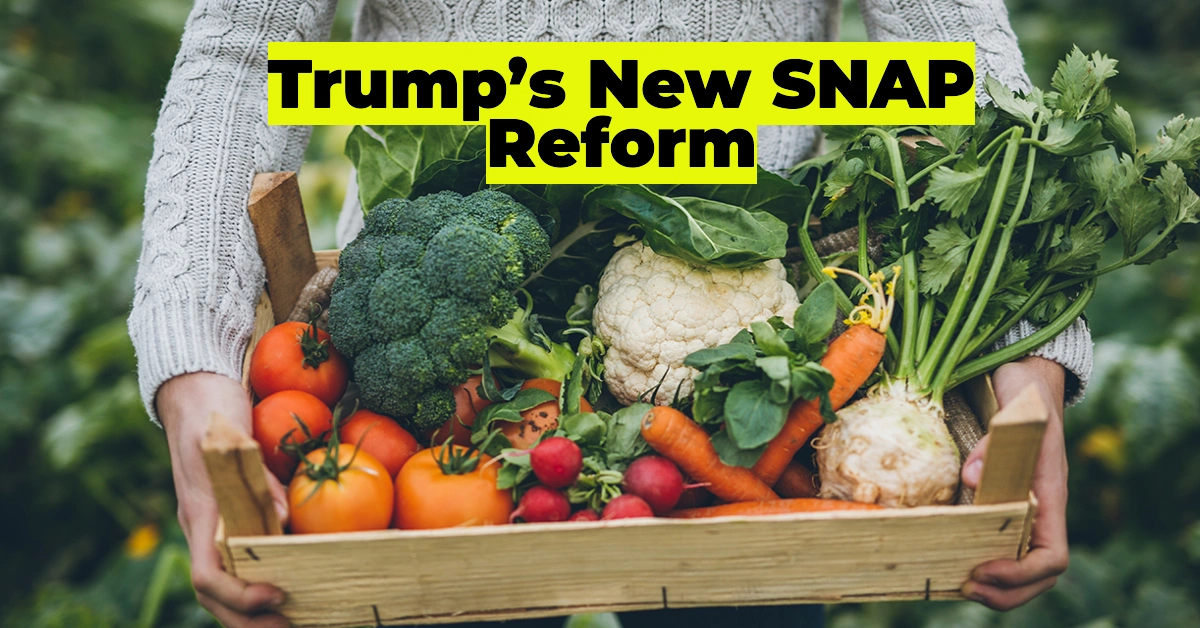The Supplemental Nutrition Assistance Program (SNAP), commonly known as food stamps, has long been a crucial support system for low-income families in the U.S. However, new reforms proposed by former President Donald Trump aim to alter the program, sparking intense debate. Will these changes reduce benefits for struggling families or enhance the system for greater efficiency? Let’s explore the details and implications of Trump’s new SNAP reform.
Table of Contents
Understanding SNAP: A Quick Overview
SNAP provides financial assistance to low-income individuals and families, enabling them to purchase nutritious food. The program is overseen by the U.S. Department of Agriculture (USDA) and supports over 41 million Americans monthly. Benefits are determined based on the Thrifty Food Plan (TFP), which calculates the cost of a basic diet.
Trump’s proposed reforms target the eligibility criteria, benefit calculations, and distribution methods, aiming to restructure the way food assistance is provided.
SNAP EBT Cards Reloaded February 2025 Payment Dates & Schedule
Is SNAP actually helpful for Americans? Let’s Clarify the Facts
SNAP Benefit Increase in 2025: Amount, Eligibility & Rates
$292 Per Family Member SNAP Payment: Your Ultimate Guide to SNAP Food Stamps
Key Changes in Trump’s SNAP Reform
1. Stricter Work Requirements
Currently, non-disabled adults aged 18 to 49 without dependents must work at least 20 hours per week to qualify for benefits. Trump’s proposal expands this requirement:
- Raises the age limit to 65 years old, requiring older adults to work to maintain benefits.
- Eliminates state waivers that allow work exemptions in high-unemployment areas.
- Imposes penalties for failing to meet work obligations.
📌 Example: A 55-year-old part-time worker may need to find additional hours or risk losing benefits.
2. Adjustments to Benefit Calculations
SNAP benefits are determined by TFP adjustments, which account for inflation and rising food costs. Trump’s plan would slow down or freeze these automatic adjustments, potentially reducing the purchasing power of SNAP recipients over time.
📌 Impact:
- Monthly benefits may decrease due to slower cost-of-living adjustments.
- Recipients may struggle to afford nutritious meals if food prices rise.
3. Government-Distributed Food Boxes
One of the most controversial aspects of Trump’s SNAP reform is the proposal to replace a portion of SNAP benefits with pre-packaged food boxes. This concept, first introduced in 2018, is intended to cut costs and reduce government spending.
📌 Concerns:
- Lack of fresh produce and culturally appropriate foods.
- Logistical issues in distribution and accessibility.
- Limited recipient choice, reducing dietary flexibility.
Who Will Be Affected?
- Low-income workers: Stricter work mandates could make it harder for part-time workers to qualify.
- Older adults (50-65 years old): Many may struggle to meet the new work requirements due to health issues.
- Rural communities: Limited job opportunities could result in benefit losses.
- People with disabilities: Those not officially classified as disabled may struggle to meet work obligations.
How Will These Reforms Impact Food Security?
According to the Center on Budget and Policy Priorities (CBPP), millions of Americans could lose access to SNAP benefits under these reforms. A 2024 study estimated that food insecurity rates could increase by 10-15% due to these changes.
🔹 Current SNAP Statistics:
- 41 million Americans rely on SNAP benefits (USDA).
- 65% of recipients are families with children.
- The average monthly benefit per person is $180.
Additional Considerations
Effects on Children and Families
Many children depend on SNAP for proper nutrition. A reduction in benefits could lead to:
- Increased childhood hunger and malnutrition.
- Higher demand for school meal programs.
- Long-term health risks and developmental issues.
Economic Impact on Local Communities
SNAP benefits stimulate local economies by increasing consumer spending at grocery stores and farmers’ markets. Cuts to the program could:
- Reduce economic activity in low-income areas.
- Impact small businesses that rely on SNAP shoppers.
Alternative Solutions and Policy Recommendations
Instead of reducing benefits, some experts propose:
- Expanding job training programs to help SNAP recipients secure stable employment.
- Strengthening child care support to enable parents to meet work requirements.
- Increasing funding for food banks to provide additional support.
Public and Expert Reactions
✅ Supporters Say:
- Reduces government spending and promotes self-sufficiency.
- Prevents long-term dependency on public assistance.
- Redirects funds to other social welfare programs.
❌ Critics Say:
- Could increase poverty and hunger.
- Fails to address barriers to employment.
- Limits food choices and nutritional adequacy.
Final Thoughts: A Step Forward or a Step Backward?
Trump’s new SNAP reform is set to reshape food assistance policies, with both potential benefits and risks. While supporters view it as a cost-cutting measure that encourages work, critics warn that stricter requirements and reduced benefits could leave millions struggling to put food on the table.
As the debate continues, staying informed and advocating for fair policies is essential. For official updates, visit the USDA SNAP website or connect with local food assistance programs.
🔎 What do you think? Should SNAP focus on stricter requirements or increased accessibility? Share your thoughts in the comments!
